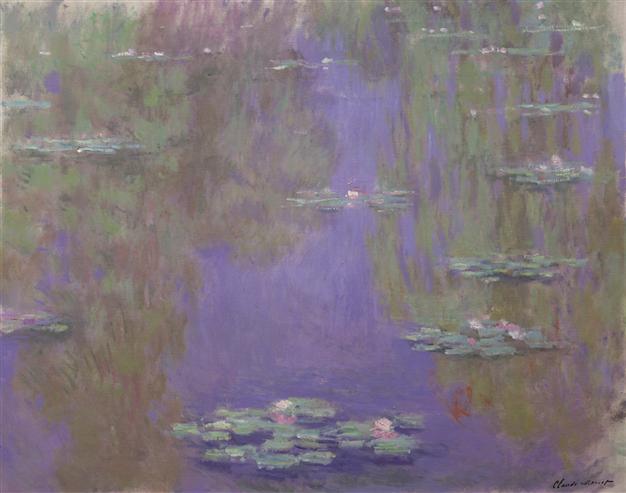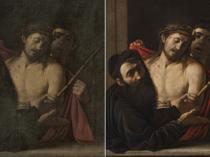Monet's garden on display at Sakıp Sabancı Museum
ISTANBUL - Hürriyet Daily News

The exhibition at the Sakıp Sabancı Museum displays 39 of Monet’s works that were neither exhibited nor sold during his lifetime.
The Sakıp Sabancı Museum’s new exhibition on the famous French Impressionist painter Claude Monet offers viewers a chance to see how the great artist “saw things.” The exhibit focuses on the artist’s later works, which were painted mostly during his years of reclusion at his Giverny house.The show opens with video footage of the Giverny garden’s present state, giving the viewer an idea of how the garden actually looked, with particular focus on the Japanese bridge and the house’s view from the rose garden, both of which were a major inspiration in a series of works painted by the artist in his later years, when his eyesight was drastically reduced due to cataracts.
The exhibition offers two large timelines showing the connections between Monet and the art scene in France, his contemporary painters, as well as a family tree. The first works to be exhibited are portraits of members of his family; his wife, three sons and his daughter, which are followed by a portrait of the artist done by his friend and peer Pierre-Auguste Renoir.
The next four rooms follow a chronological tract, exhibiting works starting from Monet’s reclusion from city life in the French countryside in 1871 up to 1903 when the artist painted his famous “Water lilies.” The second room shows only two works from 1907, titled “Water lilies study” and “Water lilies.” The flower keeps recurring in Monet’s oeuvre in an endless repetition throughout his career to the extent of an insurmountable obsession on his part.
The third room of the show showcases Monet’s large-scale “Grandes Décorations” series, which consists of large wall paintings recreating the atmosphere of the water lily pond in Monet’s Giverny garden. This room is particularly significant as it displays works that go well beyond Impressionism and illustrate Monet’s modernity as, in the last era of his life, he established himself as one of the precursors of 20th-century modernism.
Monet’s Giverny garden
The curation, made in cooperation with the Marmotten Monet Museum by its curator Marianne Matthieu, focuses on works inspired by the artist’s Giverny garden, which Monet created with his own hands and became his greatest inspiration during the last years of his life.
The exhibition consists of works from the late period of the artist who gave the impressionist movement its name; including pictures of Claude Monet’s house in the Giverny garden, garden scenes, water lilies and his famous Japanese bridge paintings. In addition signed portraits of Monet and his wife, Camille, by Renoir, personal possessions and photographs will be exhibited. The exhibition gives insight into Monet’s innovative approaches during an artistic career.
The exhibition will be open between Oct. 9 and Jan. 6, displaying 39 of Monet’s works that were neither exhibited nor sold during his lifetime.
Artistic movement in 19th and 20th century
Impressionism was an artistic movement of the mid- to late-19th and early 20th centuries characterized by a retreat from the traditional themes and techniques of art. The Impressionist artists famously tried to capture natural light at different times of day, which is especially visible in Monet’s works included in the Sabancı Museum’s selection. Taken broadly, Impressionism echoed the tastes of the middle class; however, Monet’s intention was to find ways to express his perception of nature. The ornamental character of Japanese prints had a great effect on the development of modern painting in France and on Monet’s work in particular.
The Impressionists claimed that art should be about the present rather than the past. They wanted to paint the new boulevards of Paris, its operas and café concerts, boat trips on weekends, and seaside scenes. They felt that art should depict “slices of contemporary life.” The Impressionists justified the omission of detail on the grounds that it was more important to capture the quick changes of light. Moving away from indirect styles and the themes of the Romantic and realist movements of the earlier 19th century, the Impressionists aimed to express their personal perception of an idea or image.
















